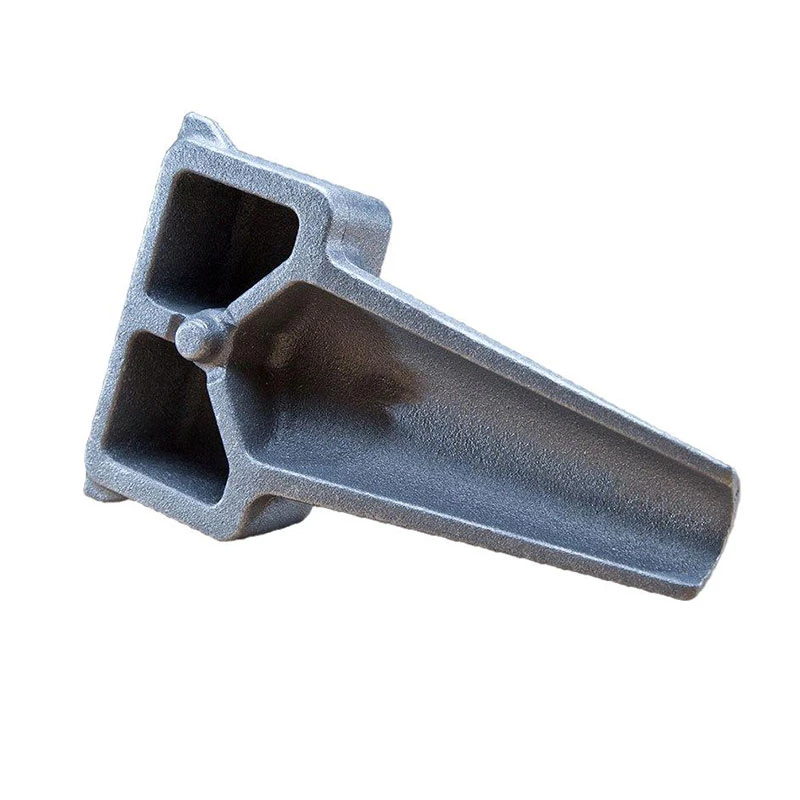Exploring the Advantages of Aluminium High Pressure Die Casting in Modern Manufacturing
Exploring Aluminium HPDC Casting A Comprehensive Overview
Aluminium High-Pressure Die Casting (HPDC) has emerged as a prominent manufacturing process, particularly in industries requiring lightweight and durable components. This method, distinguished by its ability to produce intricate shapes with excellent surface finishes, is widely used across sectors like automotive, aerospace, and consumer electronics. This article delves into the nuances of aluminium HPDC casting, including its advantages, process, applications, and future trends.
Understanding HPDC Process
High-pressure die casting involves forcing molten aluminium into a steel die under high pressure. The process begins with melting aluminium alloys in a furnace, after which the liquid metal is injected into a die via a plunger at speeds exceeding 100 miles per hour. This rapid injection helps ensure that the metal fills every contour of the die cavity without air pockets, leading to parts with impressive dimensional accuracy and surface finish.
The two primary types of dies used in HPDC are cold chamber and hot chamber dies. In cold chamber processes, the molten metal is poured into a chamber that is separate from the furnace, making it ideal for alloys with high melting points. Conversely, hot chamber processes maintain the melting pot attached to the injection mechanism, allowing for continuous production of parts from lower melting point alloys.
Advantages of Aluminium HPDC Casting
The aluminium HPDC process offers numerous benefits that contribute to its widespread adoption
1. Cost-Efficiency Despite the higher initial investment in dies, HPDC reduces per-part costs significantly for large production runs due to its speed and efficiency. The ability to create complex geometries means less machining is required, further cutting down costs.
2. Dimensional Accuracy and Surface Finish Parts produced via HPDC typically exhibit tight tolerances and smooth surfaces, reducing the need for additional finishing operations. This precision is crucial in industries like automotive, where part reliability is vital.
3. Material Properties Aluminium alloys used in HPDC casting are known for their outstanding mechanical properties, including strength-to-weight ratio, corrosion resistance, and thermal conductivity. These characteristics make them ideal for a multitude of applications.
aluminium hpdc casting

4. Reduced Waste The efficiency of the casting process minimizes scrap, contributing to more environmentally friendly manufacturing practices. The use of recycled aluminium in HPDC further enhances sustainability.
Applications of Aluminium HPDC Casting
The versatility of aluminium HPDC extends to various sectors
- Automotive Industry Components such as engine blocks, transmission cases, and structural parts are commonly produced using HPDC. The lightweight nature of aluminium contributes to fuel efficiency and lowers emissions.
- Aerospace High-strength components that withstand high temperatures and pressures are critical in aerospace applications. Aluminium HPDC can achieve the intricate designs required for complex aerospace parts.
- Consumer Electronics Many electronic devices utilize aluminium housings, not only for their aesthetics but also for their lightweight and robust protection. HPDC allows for the mass production of these intricate designs.
- Lighting and Fixtures The durability and design flexibility of aluminium HPDC make it ideal for manufacturing parts used in modern lighting solutions.
Future Trends
As industries increasingly shift towards sustainability and efficiency, the future of aluminium HPDC casting looks promising. Innovations in die design, automation, and digital manufacturing are expected to enhance productivity and reduce lead times further. Additionally, the integration of 3D printing technologies may allow for quicker prototyping and production of complex geometries that were previously difficult to achieve with conventional methods.
In conclusion, aluminium HPDC casting stands out as a formidable method for producing high-quality, lightweight components across various industries. Its advantages in cost, precision, and material properties position it as a key player in the future of manufacturing. As technology evolves, the potential for further advancements in this area indicates a bright future for manufacturers and industries that rely on high-performance aluminium components.
-
OEM Sand Cast Pump Valve Fittings-Baoding Hairun Machinery|Precision Customization&Industrial SolutionsNewsAug.03,2025
-
OEM Sand Cast Pump Valve Fittings - Baoding Hairun Machinery And Equipment Trading Co., Ltd.|Precision Engineering&Fluid ControlNewsAug.03,2025
-
OEM Sand Cast Pump Valve Fittings-Baoding Hairun Machinery | Custom Casting SolutionsNewsAug.03,2025
-
OEM Sand Cast Pump Valve Fittings - Baoding Hairun Machinery And Equipment Trading Co., Ltd.NewsAug.02,2025
-
OEM Sand Cast Pump Valve Fittings - Baoding Hairun|Precision&CustomizationNewsAug.02,2025
-
OEM Sand Cast Pump Valve Fittings - Baoding Hairun Machinery And Equipment Trading Co., Ltd.NewsAug.02,2025















